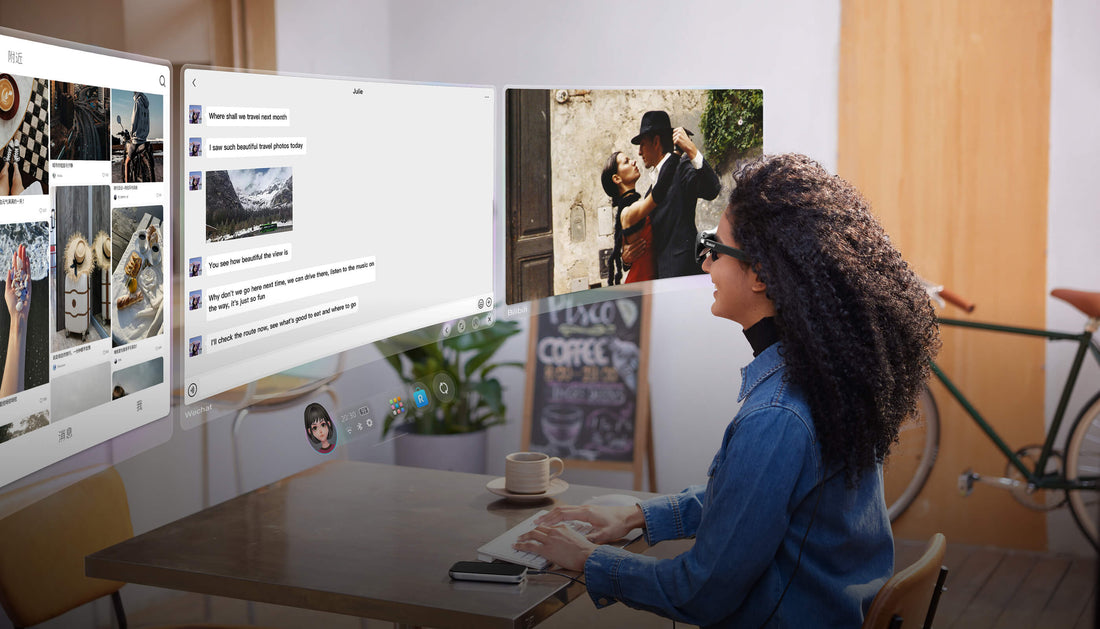Rokid AR Spatial Is a Pair of Spatial Computing Glasses That Don’t Make You Look Like a Cyborg

First impressions? It’s not trying too hard. And that’s precisely why it works.
The new Rokid AR Spatial is everything most AR headsets aren’t: featherlight, affordable, and understated. At a time when spatial computing is still synonymous with $3,500 face computers, Rokid is putting out a $649 pair of glasses that look like something you’d wear on purpose. That alone feels like a plot twist.
The Spatial is functional, surprisingly intuitive, and—for once—realistically built for how we already live. It doesn’t try to reinvent your world; it adds a few smart layers.
Three screens, zero friction
Up to three app windows can be displayed in space, and unlike most other AR demos, they’re not laggy or confusing to control. The glasses handle YouTube, messages, and Spotify running side by side without forcing you to switch back and forth. Multitasking feels native, not like you’re pushing a desktop metaphor into your face.
The 300-inch virtual screen looks sharp and stable, even in non-optimal lighting. It supports 3D video playback, and yes, you can watch Dune on a fake IMAX screen while lying flat in bed. We tried it, and we’d do it again.
The screen doesn’t feel glued to your head, either. Rokid’s Sport Mode keeps visuals locked even if you move, whether shifting in a seat or walking through an airport terminal.
Vision-corrected, travel-friendly, gaming-ready
The sheer amount of thoughtful detail pushes this past the novelty category. The built-in diopter and IPD adjustment mean people with myopia (up to -6.00D) can see clearly without prescription lenses. It also weighs just 75 grams, about the same as your average pair of sunglasses and 1/8th the weight of the Apple Vision Pro.
And then there’s Station 2, Rokid’s companion processing unit. It runs Android, supports Google Play apps, and handles Netflix, Prime Video, Hulu, and Disney+ without workarounds or jailbreaking. It also charges while in use, so you don’t have to plan your screen time around battery life.
Oh, and yes—it supports Steam Link, Moonlight, and PS Remote Play, meaning your entire gaming backlog can now be played in an AR cinema from your hotel bed. Add a Bluetooth controller, and you’re running Elden Ring on a screen floating in the middle of your living room.
It’s ready.
The Rokid AR Spatial isn’t trying to be everything. It doesn’t have full passthrough, ultra-dense sensor mapping, or hand tracking that maps each of your fingers. But here’s the thing, it doesn’t need to. It’s not a science experiment. It’s not a dev kit. It’s a finished product; more importantly, you’ll want to use it. The Rokid AR Spatial looks like something you’d wear in a co-working space without getting side-eyed.
This might not be the AR headset for everyone. But it’s the first one that feels like it could be. That’s not hype. That’s progress.
